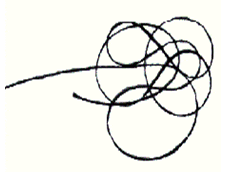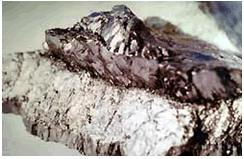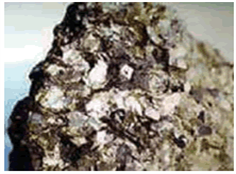
FORTUNE Graphite Inc.

Fortune Graphite Inc. is a private company in British Columbia, Canada.
ISIN CA34965W1014
CUSIP 34965W101
The company acquired a large group of mineral claims in the Slocan Mining Division; a known graphite mineral-bearing region of British Columbia, Canada. The properties are in an advanced stage of exploration and the company is presently engaged in a graphite mineral development project on those properties.
Fortune Graphite Inc. also owns reported gold and silver bearing placer properties in British Columbia, Canada
NI43-101 Technical Report on the Superior, Koch, and Amar Properties,
April 10, 2012
Certificate of Qualified Person
Expert's Consent Letter
Flake Graphite
Fortune Graphite recently acquired the flake graphite bearing Superior Group graphite mineral claim in British Columbia. Flake graphite is key for the development of fuel cells and is in increasing demand for many high-tech products as well as vehicles.
What is graphite?
Chemistry: C, Elemental Carbon
Class: Native Elements
Subclass: Non-metallic
Group: Carbon
Uses: for the lead in pencils, to toughen steel, in high-strength composites and as a lubricant.
Graphite is an industrial mineral. This means that it:
- is inorganic
- occurs naturally in nature
- is solid under normal conditions
- has a crystalline structure
- has a definite chemical composition
 Graphite
Graphite
Somewhat of a surprise is that at surface temperatures and pressures, Graphite is the stable form of carbon.
The chemical symbol for graphite (carbon) is indicating that it is composed solely of carbon. In the commercial arena, the words carbon and graphite are often used interchangeably.
Industrial minerals are considered the stars of the mining sector of the new global economy of the 21st century. The presence of industrial minerals permeates many of the high-tech goods underlying our standard of living from advanced automotive brake systems to safe computer monitors and diagnostic medical tools.
Graphite has unique physical and chemical properties, which facilitate its use in the high-tech industrial sector. It can easily and cheaply be thermally or chemically purified to over 99.99% purity on a large commercial scale with consistent results. In the processing other elements can be added to enhance performance according to the manufacturer's specifications. This assures the end user of a high-performance product specifically formulated for their use at a competitive cost.
Graphite can provide innovative solutions to long-standing industrial problems. It is often used for composite materials, carbon fibres and industrial coatings. Composites are materials that consist of any combination of two or more materials that are bonded together to have properties different than their own and that can act as one structure but maintain a distinct interface between them. Composites are increasingly used in aerospace, military and diverse manufacturing processes.
The application of coatings can significantly improve the wear resistance and corrosion resistance of a surface.
 Carbon Fiber
Carbon Fiber
Carbon fibres are the strongest fibres known. They are used to fill and reinforce products. An offshoot of the US industrial military complex, they were first used in military aircraft. Graphite is baked in an air free oven at high temperatures. The result is thin fibres which are extremely strong, thirty times stronger than steel. The resulting fibres do not stretch, compress or bend and are extremely light in weight.
Because they are chemically inert or unreactive, carbon fibres don't react with the host medium such as the outer part of a bicycle fame or a tennis racket. This inertness also makes them suitable for medical applications such as hip and knee ligament replacement.
Because of the ease of production, they are increasingly used in a variety of industrial applications. They are both low cost and high-performance. The aerospace industry is an obvious user of carbon fibres and composite materials. The use of lighter materials in aircraft construction allows for fuel savings and greater payload.
Carbon fibres are used in stealth technology. In the first Gulf War, cruise missiles showered thin carbon fibres over electrical facilities, creating massive short circuits that shut down electrical power.
Graphite Classifications
Graphite is a natural form of carbon characterized by its hexagonal crystalline structure. It occurs naturally in metamorphic rocks such as marble, schist and gneiss. The same element crystallizing in an octahedral system becomes a diamond.
It is a lustrous black carbon mineral, unctuous, and relatively soft with a hardness of 1-2 on the Moh's scale. It occurs naturally in the earth's crust and is the most abundant form of pure carbon.
It is an excellent conductor of heat and electricity and has a high melting temperature of 3,500 degrees Celsius. It is extremely resistant to acid, chemically inert and highly refractory.
Because of these underlying physical and chemical properties, there is a global market for graphite. This commercial market is composed of three distinct grades of graphite:
- Amorphous Graphite
- Crystalline Lump Graphite
- Flake Graphite
There are distinct differences between these three grades. Their varying characteristics are the result of differences in geologic region and occurrence.
Each has its own pricing structure and even within each category, price is strongly affected by purity, types of contamination and crystal size. There is also a very large specialized market for synthetic graphite.
Amorphous Graphite
 Amorphous graphite sample
Amorphous graphite sample
Microcrystalline graphite is commercially called amorphous graphite. It is usually formed by the thermal metamorphism of coal. Amorphous graphite has very small crystals with graphite content ranging from 15% to 98% resulting in more limited uses. The value can be as little as 10% of the coarsely crystalline variety. Older and more basic technologies make use of this grade of graphite for its high melting point, resistance to thermal shock, lubricating and coating properties. Amorphous graphite sampleIt is used for:
- Carbon Parts
- Coatings
- Friction
- Materials
- Pencils
- Lubricants
Its use in the iron and steel industries has been replaced by the higher grades of graphite. Amorphous graphite is still being used as a carbon additive in many of the developing nations as it is cheap and readily available. Graphite for these basic applications is high volume with little processing of the ore required.
The primary suppliers of this grade are China, Korea, Mexico, Austria, Russia, Zimbabwe, and Czechoslovakia.
Crystalline Lump (Vein) Graphite
Lump graphite deposits are found in fissure fillings in veins, fractures or cavities in either igneous or metamorphic rocks. The size of the particles varies from fine grains to large lumps. Veins can be from 2 mm to 2 m.
 Crystalline lump (vein) graphite
Crystalline lump (vein) graphite
Current applications for this grade include:
- Lubricants
- Castings
- Batteries
- Coatings
- Powder Metal
- Carbon Parts
Sri Lanka is the only commercial producer of this grade and due to political unrest, it has lost market share in the battery and lubricant markets.
Crystalline Flake Graphite
Flake graphite occurs as isolated, flat platey particles disseminated in lenses or pockets in metamorphic rocks. Less frequently it occurs in massive accumulations in veins. Graphite is formed when pure carbon atoms link together to form flat sheets, which manifest themselves as large visible flakes or coarsely crystalline graphite.
Flake graphite consists of these flakes and is:
- Classified from coarse to fine flakes.
- Graded according to their graphitic carbon content.
Quality is determined by the carbon content and the particle size. The flake form occurs in only a few locations around the world.The vast majority of graphite in the Fortune Graphite's deposit is of the highly desirable coarsely crystalline flake variety with a high carbon content and virtually no significant contaminants.
Global demand for coarsely crystalline flake has increased 40% over the last five years and is expected to continue to increase annually for the foreseeable future. The high-tech sector is the main consumer of high-quality flake graphite. Flake graphite is used for industrial applications requiring high carbon content to ensure high-performance levels. Although this requires additional processing costs to assure the quality product demanded for these applications, the profit margins are correspondingly greater.
The trend in this market sector is for higher carbon and higher purity levels. The advent of advanced purification methods for graphite facilitates new applications for graphite across all industry sectors.
The primary suppliers of flake graphite are China, Brazil, Canada, Malagasy, Norway, Ukraine and Zimbabwe.
Markets for this grade include:
 Crystalline flake graphite
Crystalline flake graphite
- Brake Linings/Pads
- Batteries
- Friction Materials
- Fuel Cells
- Gaskets
- Seals
- Bearings
- Foils
- Shrouds
- Electrical Brushes
- Brick
- Composites
- Crucibles
- Carbon Pans
- Coatings
- Medical Applications
- Graphite Sheets
- Computer Circuit Boards
- Sports Equipment
- Lubricants
- Powder Metal
- Refractories
Key Characteristics of Graphite
Some of the key physical and chemical properties of graphite, which render it indispensable to modern industry, are:
- High melting temperature
- Stability and strength at high temperatures (up to 4,500 F in non-oxidizing atmospheres)
- High thermal and electrical conductivity
- Chemically inert
- High resistance to thermal shock
- High conductivity of solid; low conductivity of porous foam, cloth and tape
- Low coefficient of thermal expansion
- Good electrical conductivity. It is the only non-metal that is a good conductor of electricity
- High radiation emissivity
- Flame retardant
- Absorbs radio waves
- High compressive strength
- Stiffness of solid; flexibility of filament, cloth or tape
- High resistance to erosion
- Good machinability
- Low friction; self-lubrication
- High resistance to chemical attack and corrosion
- High absorption of gases and vapours
- High moderating ratio; i.e., ratio of fast neutron slowing-down
- Power to bulk neutron absorption coefficient
- High ratio of thermal neutron scattering, into the absorption crosses section.
"Further information about graphite can be found at: www.en.wikipedia.org/wiki/Graphite"